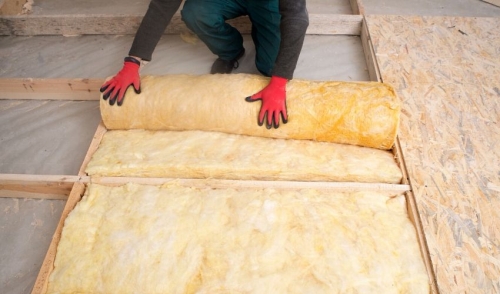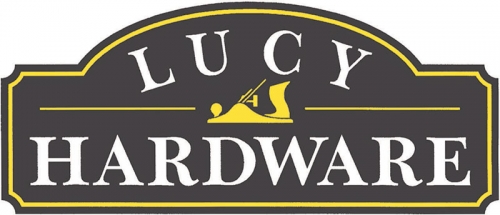
What You Should Know About Installing Insulation
Insulation is essential for an energy efficient home, and proper insulation can help moderate temperature changes and provide exceptional thermal control. This can not only keep a home more comfortable and save money on heating and cooling costs, but will also lower wear and tear on a furnace or air conditioner by minimizing temperature extremes. Before you add extra layers of insulation to your home, however, it is important to do your research so you can install insulation most effectively.
Types of Insulation
There are several different types of insulation, and each one has pros and cons for home use depending on your specific insulating needs and DIY skills. Carefully understanding each insulation type is the first step for proper insulation installation.
- Fiberglass Insulation – The most common type of insulation, fiberglass insulation is available as batts (backed sheets or rolls) as well as loose fill. This is an inexpensive and flexible option, and is ideal for use between studs, joists, and beams. Fiberglass insulation is nonflammable and resists moisture damage, but because it includes recycled metal and glass particles, it can cause extreme irritation to the eyes, nose, and any sensitive skin or membranes. Fiberglass insulation is often used in attics, floors, crawlspaces, walls, and basements.
- Rock Wool Insulation – Also called mineral wool, rock wool insulation has similar characteristics to fiberglass insulation and can be used in the same ways. It is typically available as loose fill that can be blown into areas needing coverage, or it is available in bags to be poured. Rock wool insulation can withstand much higher temperatures than other types of insulation, making it great for restaurants and other businesses that deal with open flame, or else for areas around fireplaces and heating elements (always with proper protection).
- Spray Foam – Fast and efficient, spray foam insulation is a high-pressure spray that evenly coats the area where it is applied, then expands to fill in even small cracks, niches, seams, and crevices. This makes spray foam ideal for already finished spaces because it can be installed with only minimal disruption or damage to the existing surface or structure. It is also a favorite choice for any odd-shaped areas such as around corners or inside walls.
- Cellulose Insulation – This type of insulation can be more difficult to find, but is a more environmentally-friendly option because it is composed of organic materials and recycled paper. This material is chemically treated to resist moisture damage and withstand pests. That treatment will eventually wear off and the materials will degrade, however, and the insulation will need to be replaced every few years. This is a good option for attics and crawlspaces, or for any use where breathing problems or very sensitive allergies may be a concern.
- Foam Boards – Foam board insulation is stiff and sturdy, and is easy to cut to proper size, even around small spaces or tricky corners, such as around sealed electrical boxes. This insulation is ideal for use on slabs, making it a preferred choice for garages, basements, and under floors, and it is one of the easiest types of insulation for amateurs to handle effectively.
With different insulations offering different benefits, it is very common to use more than one type of insulation for a single project to ensure the best results.
10 Things You Need to Know About Insulation Installation
When you are planning to install your own insulation…
- Remember Safety First – No matter what type of insulation you choose, take the proper safety precautions with eye protection, breathing protection, and proper tool use. Read installation instructions carefully and follow all recommendations.
- Fix Leaks Before Insulating – Thoroughly check the area you will be insulating for any signs of water leakage, seeping, or mold. Those issues must be mitigated before installing insulation or any moisture and mold will compromise the insulation’s effectiveness.
- Be Aware of Fire Hazards – Insulation should never be installed directly against wiring, recessed lighting, water heaters, or other potential heat sources that could create a fire hazard. Instead, install protective barriers first to minimize any risk.
- Leave Backing Intact – If the insulation includes a paper backing, leave it in place. This backing provides additional moisture protection and helps guide moisture in the home, minimizing the risk of mold and rot. The backing should always face your home’s interior.
- Fill Every Gap – Even small gaps in insulated areas can allow moisture to intrude and will therefore compromise the effectiveness of the insulation. Caulk seams, small holes, and other gaps before applying insulation to ensure tight seals.
- Weatherstrip Access Points – Whether you have a door, hatch, hidden panel, or other unique access to an attic, basement, or crawlspace, weather strip it firmly to prevent any air or moisture getting where it shouldn’t be. The same goes for any windows or vents in the space.
- Insulate Around Pipes – Don’t forget to install foam sleeves or similar insulation around pipes. Not only will this protect pipes from freezing as well as preserve hot water temperatures, but it will minimize moisture condensation that could drip and compromise insulation.
- Provide Ventilation – It may seem counterintuitive to have ventilation and air flow through insulated spaces, but it is necessary to remove moisture and odors. Interior vents, such as from bathrooms or laundry areas, should lead outside, rather than into insulated spaces.
- Don’t Go Overboard – More insulation is not always better, and too much insulation in one area will lead to compaction. As insulation compacts, it loses its air pockets and its effectiveness decreases. Measure insulation and insulated space carefully to ensure correct amounts.
- Know When to Hire Professionals – While some types of insulation are easier to use and some spaces are easier to insulate than others, not every job can be done without professional experience. If your job is larger or more complicated than you can handle, take the time to consult professional insulation contractors to ensure a safe, effective job.
A better understanding of insulation installation can help you determine what your job needs and whether you can manage it on your own or if it would be safer and more efficient to hire a professional. Whichever you choose, you will enjoy the savings from having a thoroughly insulated home.
